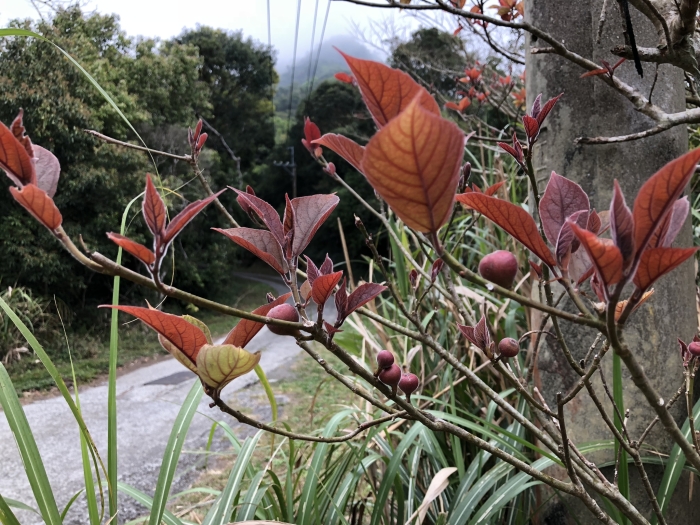Climbingfig
(Ficus erecta)
Climbingfig (Ficus erecta)
/
/

Cheng-Tao Lin
CC BY 4.0
Image By:
Cheng-Tao Lin
Recorded By:
Copyright:
CC BY 4.0
Copyright Notice:
Photo by: Cheng-Tao Lin | License Type: CC BY 4.0 | License URL: http://creativecommons.org/licenses/by/4.0/ | Rights Holder: Cheng-Tao Lin | Publisher: iNaturalist | Date Created: 2018-04-01T07:41:32Z |














































Estimated Native Range
Summary
Ficus erecta, commonly known as Climbingfig, is an evergreen vine or shrub native to the subtropical and temperate forests of East Asia, including Japan, Korea, Taiwan, and parts of China. It can also be found in Southeast Asia. Climbingfig typically reaches a height of 10-15 feet (3-4.6 meters) and spreads 3-6 feet (0.9-1.8 meters). It has a bushy growth habit with glossy, ovate leaves and can produce small, non-showy figs under the right conditions. The plant is often used for its foliage rather than its fruit, which is generally not noticeable.
Climbingfig is valued for its attractive, dense foliage and its ability to climb structures, making it suitable for use as a ground cover or for covering walls and fences. It is relatively easy to maintain and can be pruned to shape. In cultivation, it prefers full sun to part shade, consistent medium moisture, and well-draining soil. It is not tolerant of frost and should be protected in cooler climates. Climbingfig can be susceptible to leaf spot diseases and may attract pests such as aphids and scale insects. It is also known for its aggressive root system, which can cause problems if planted too close to buildings or other structures.CC BY-SA 4.0
Climbingfig is valued for its attractive, dense foliage and its ability to climb structures, making it suitable for use as a ground cover or for covering walls and fences. It is relatively easy to maintain and can be pruned to shape. In cultivation, it prefers full sun to part shade, consistent medium moisture, and well-draining soil. It is not tolerant of frost and should be protected in cooler climates. Climbingfig can be susceptible to leaf spot diseases and may attract pests such as aphids and scale insects. It is also known for its aggressive root system, which can cause problems if planted too close to buildings or other structures.CC BY-SA 4.0
Plant Description
- Plant Type: Vine
- Height: 10-15 feet
- Width: 3-6 feet
- Growth Rate: Moderate
- Flower Color: N/A
- Flowering Season: Winter, Spring, Summer, Fall
- Leaf Retention: Evergreen
Growth Requirements
- Sun: Full Sun
- Water: Medium
- Drainage: Medium
Common Uses
Bird Garden, Butterfly Garden, Deer Resistant, Drought Tolerant, Low Maintenance, Potted Plant, Salt Tolerant
Natural Habitat
native to the subtropical and temperate forests of East Asia, including Japan, Korea, Taiwan, and parts of China
Other Names
Common Names: Japanese Fig, 천선과나무, 假枇杷, Ai Xiao Tian Xian Guo
Scientific Names: , Ficus erecta, Ficus japonica, Ficus taquetii, Ficus pseudopyriformis, Ficus tenax, Ficus beecheyana subsp. tenuifolia, Ficus cornifolia, Ficus maruyamensis,
GBIF Accepted Name: Ficus erecta Thunb.